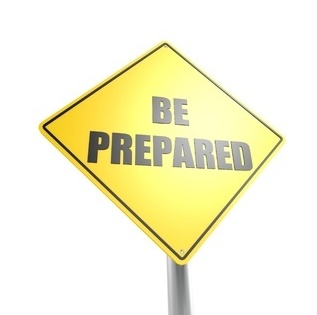When tasked with obtaining sponsorship money or in-kind donations, simple prior preparation will make the entire process easier. Before asking anyone for anything, ask yourself these basic questions:
What is our goal? Does my group need monetary sponsorship or in-kind donations, or both?
There are two main types of support, monetary (a company or person writing a check or offering cash) or an in-kind donation (a donated product or service). Both are obviously helpful but if you accept an in-kind donation in lieu of monetary, be sure it is something you really need and is useful to you or can easily be turned into cash.
Examples of an in-kind donation are food or beverages provided at a conference luncheon, office volunteers or airline travel miles. The key, however, is that your organization would otherwise have to purchase these items if they were not donated.
(More on in-kind donations.)
What do we have to offer our sponsors?
Understandably, many (maybe most) companies want to know what they are going to “get” in exchange for their support. It is vital to have a well thought-out list of benefits prior to making that first call or having that first face-to-face meeting.
For instance, will you advertise the sponsoring companies on your web site, promote them through your social media accounts, in conference materials, or printed news letters? Will you place sponsoring company logos on your marketing materials or other collateral material? Perhaps it is exhibit space at your fundraising event. You may have different levels of sponsorship and therefore different benefits.
Whatever the benefits of sponsorship may be, the list should be specific and presented in an attractive manner. Your list can include just a handful of options, or be as detailed as the sponsorship benefits list of the USA Science & Engineering Festival. A simple web search of “sponsorship benefits” returns many examples of sponsor benefit sheets; another example would be the sponsor benefits list of the Partners in Emergency Preparedness Conference.
Who should we ask?
Start by making a list of companies or people who already support your organization in some fashion. Past donors, conference attendees if applicable, or other organizations with like-minded goals or missions. (Depending on your supporter base it might also make sense to include sponsorship information with your donation requests.)
Make a list of these companies and a person at each organization to approach. That contact doesn’t need to be the most senior person but someone who knows your organization and appreciates the value of being associated with it. Even if he or she isn’t the final decision maker, they can open doors for you within the company.
When a sponsorship agreement is in place, quickly send a letter thanking the company or person for the support and again outlining what recognition or benefits will be received for the donation. This should be signed by the senior ranking position in your company. If you have a Board of Governors or Directors, it is a nice touch to have the Chairperson sign the letter as well.
(Click over to writing fundraising letters for some examples of thank you letters.)
Recognition – sing their praises!
Because you have already promised the sponsor a certain amount of exposure, you must deliver! Whether it is placing an advertisement on your web page, displaying thank you banners at conferences or a personal thank you from the CEO of your organization in front of a group, if you don’t provide the promised exposure, you won’t have repeat sponsors.
At the end of the year, send a wrap-up letter again thanking the sponsor for their support and recognizing that the year’s success was made possible, in large part, by their sponsorship.
With some advance planning and organization, obtaining sponsorship is not a difficult task. Recognizing the supporter before, during and after the sponsorship period will go a long way in generating repeat business and/or support. Good luck and happy asking!

